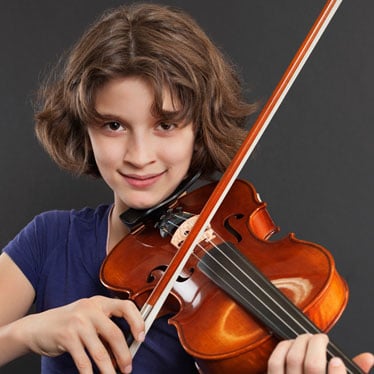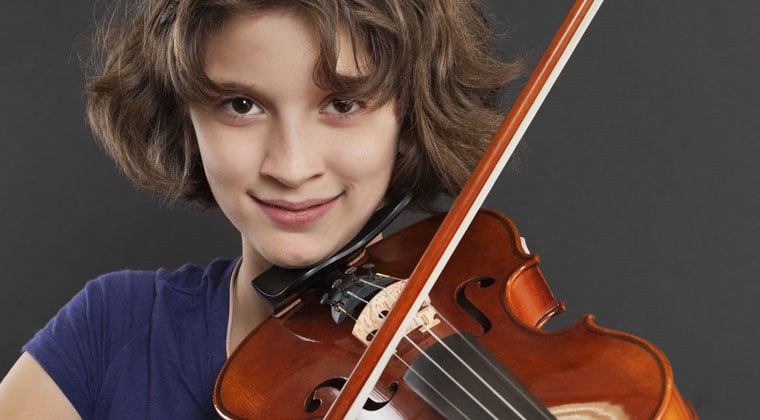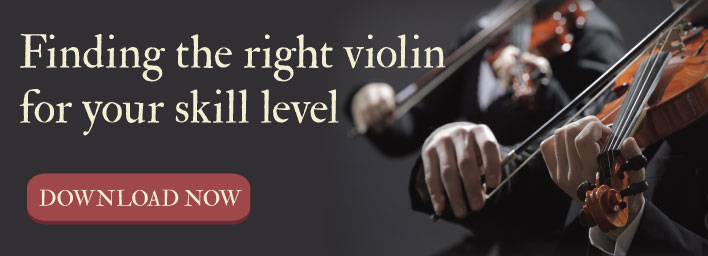
 Learning to play the violin can be quite a challenge. And although it’s totally worth the struggle, many students find that the first year or two can be particularly difficult. Because you’re learning to both read music and train your body to hold and play the violin properly, it’s easy to slack off on form. This naturally means that when you’re beginning violin, some of the fundamental techniques will require extra attention before you can execute them without a conscious effort.
Learning to play the violin can be quite a challenge. And although it’s totally worth the struggle, many students find that the first year or two can be particularly difficult. Because you’re learning to both read music and train your body to hold and play the violin properly, it’s easy to slack off on form. This naturally means that when you’re beginning violin, some of the fundamental techniques will require extra attention before you can execute them without a conscious effort.
However, the sooner you master these common problems, making measured progress will be a lot easier.
When beginning violin, most students make the same type of errors. Whether it involves learning the correct form and precise execution, or solidifying your practice habits and performing violin maintenance and care techniques correctly, learning to overcome these common problems will deliver great strides.
Correct Form
Your posture is extremely important when learning to play any type of instrument. When beginning violin, perfect posture, arm angle, height, head placement, and other body positions are emphasized because they play a key role in your ability to learn and play correctly. Naturally, as you advance, you’ll incorporate your own particular style. The same principles are used in sports and other forms of physical training, because they work.
Slacking on your form will negatively affect almost everything you play. These are some common problems with form:
- Slouching/Not sitting up straight
- Pointing your violin toward the ground, sometimes called “sinking Titanic,” is caused by leaning forward, and not enough counter balance weight from keeping your shoulders back.
- Hugging the left elbow close to the body.
- Basically, anything that feels “frozen,” or that you have to hold your body in a clenched position to perform.
These types of over-stress activities not only make it difficult for your execution, but if ignored can lead to serious injury.
Execution Problems
Execution problems largely stem from incorrect posture and form. These common fingering and bowing techniques will hinder your ability to execute properly when beginning violin. Some of the most prevailing issues include:
- Pressing too hard on the fingerboard, or lifting your fingers too high.
- Left wrist touches the violin, or is pressed up against the bottom of the neck. Later, as you play in higher, more advanced positions your wrist will make contact, but early on, it should not.
- Squishing your (left-hand) fingers together or letting your pinky curl (separate) from the others. Your fingers should be relaxed and supple for fluid movement.
- Incorrect placement of the first finger. This will cause terrible intonation issues. Your first finger should act as an anchor for all of the others.
- Straight bowing/staying on the “highway.” These problems result from improper movement of the elbow or shoulder.
- Not using the entire bow length, especially the heel. You must learn to bow using 100% of the hair.
- Not bending your thumb. Bow hold is extremely important, not bending your thumb correctly freezes your wrist, and you won’t be able to bow straight.
- Backwards bowing. Basically, this means upbowing when it should be a down bow movement, and vice versa.
- Rigid bow changes, or crash landing on the strings. When beginning violin, bowing techniques require diligent attention. Anything less than smooth, relaxed transitions will lead to screeches, squawks, and unpleasant vibrations.
Don’t try to fix all of your problems at once. Pick one area and master it before tackling another challenge. Otherwise, you’ll feel overwhelmed.
Practice Habits/Maintenance
Like all worthy pursuits, the amount of effort you put in will equal how much you get out. When teaching violin for beginners, it’s important to stress the development of effective practice habits. These are some common mistakes new students make:
- Failing to devote a specific amount of time during each practice to correct a problem with technique.
- Forgetting to ask “why did is go right?” When beginning violin, mental focus is extremely crucial. Obviously, you’ll examine the reasons something went wrong, but don’t forget to assess why something went right.
- Auto-pilot mode. Nothing is more detrimental to progress than practicing on auto-pilot mode, where you zone out and think about other things. Concentrating all of your brain power on practice is tough, but vital to success.
- Playing with unwashed hands or touching the bowhair. New students must be sure to guard their instrument from natural oils in the skin.
Remember, don’t try to overcome all of your issues at once. Use a systematic process that addresses each one in turn, and pay attention to the signs your body gives you. If you notice that your elbow is getting closer to your body, take a break and practice something else until the fatigue has lessened.
When beginning violin, you can ensure that your education is effective by focusing on correcting the common problems all new students face.

